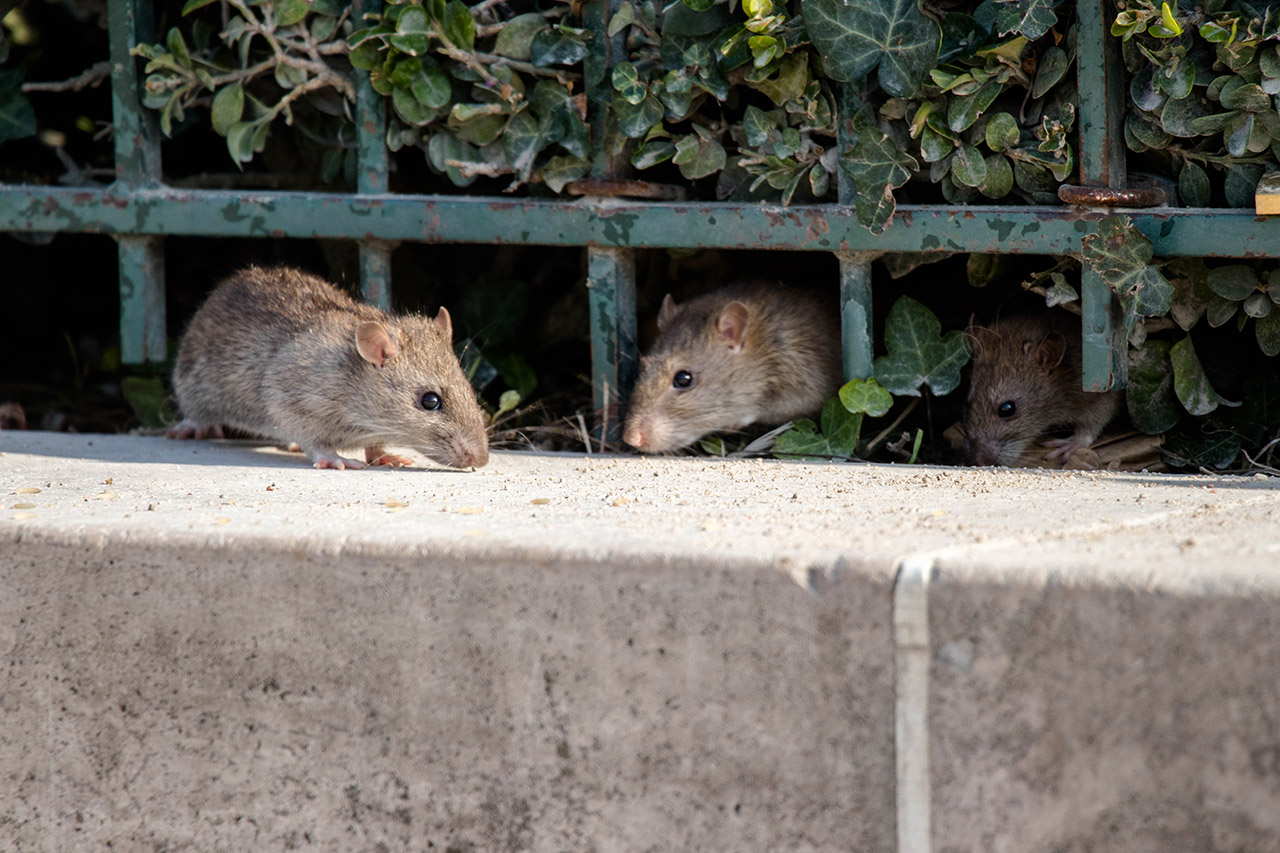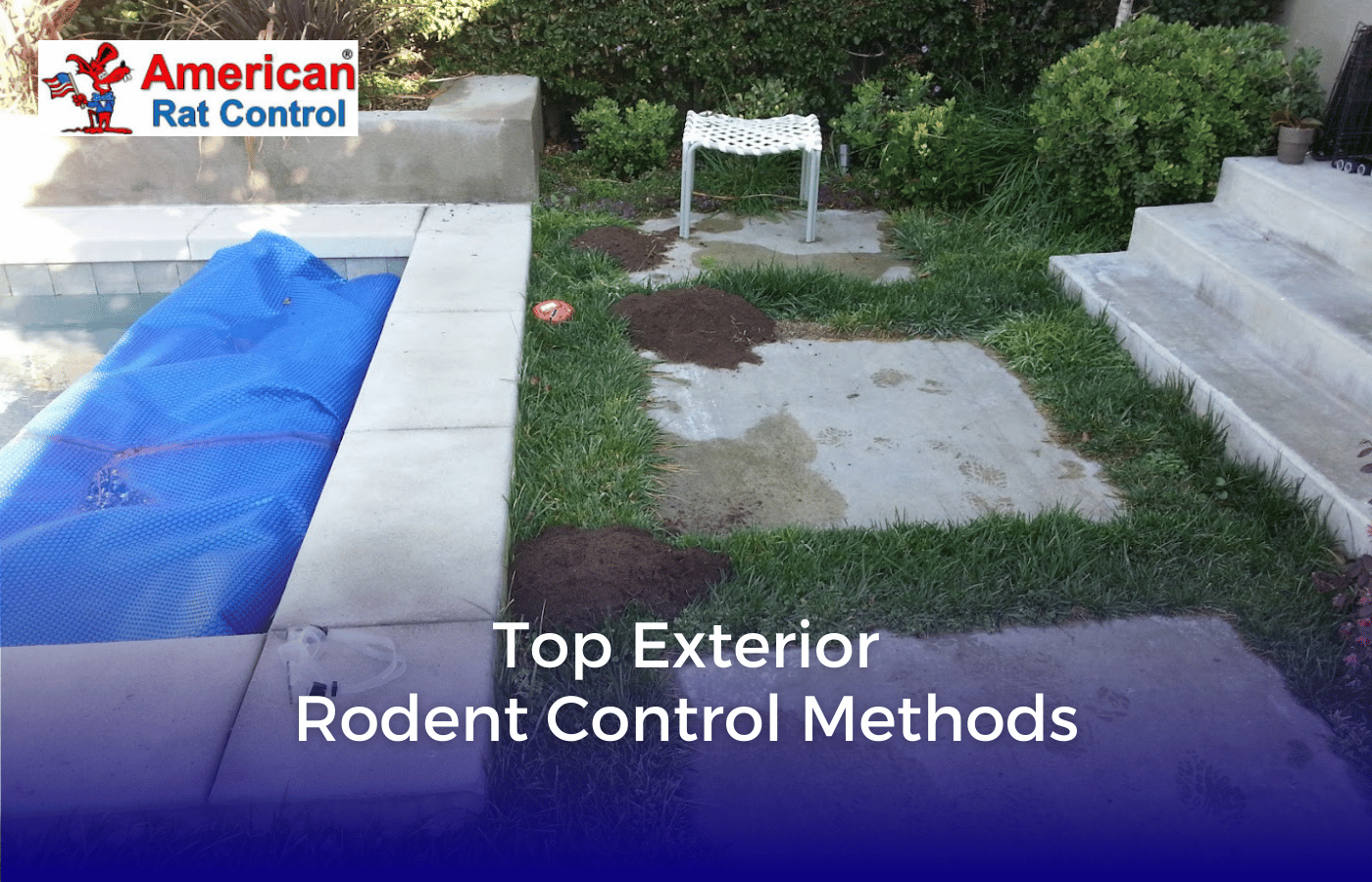Many homes here in Los Angeles have experienced mouse, rat, and rodent infestation. This is particularly unpleasant as rats and mice can transmit diseases, spoil food, and cause structural damage to your home. Below, we want to share effective tips for rodent-proofing your home and property. By following these steps, you can prevent rats from taking up residence in your home.
1. Take Away Places for Rodents to Hide
Preventing rat infestations starts with making it difficult for them to nest and move unnoticed. Rats like to build nests in concealed areas on your property like trash heaps, compost piles, overgrown shrubbery, firewood stacks, and debris piles that haven’t been cleaned up.
By keeping your foliage, bushes, and shrubs trimmed back, it removes pathways that rodents like to travel through. Rats and mice like to move in secret, not in the open, and often travel along the perimeter of your property.
Trash piles, random clutter, and firewood piles can also be hiding places for rats, where they can create a nest without being detected. Cleaning up your yard and removing hiding spots will discourage rats from establishing a nest near your home.
2. Seal Up All Entry Points to Your Home
Any entry point that is ¼ inch or larger must be sealed. Mice and rats can squeeze between extremely small cracks and crevices. Be sure to check all exterior walls, doors, windows, vents, and drains. Seal any gaps with caulk, or steel mesh.
The largest non-collapsible part of a mouse or rat body is their skull. A mouse can get through a hole the size of a dime, and a rat can squeeze through a hole the size of a quarter.
Repair any wood that has been damaged by water erosion, external damage, or insect damage. Rodents can gnaw existing holes to make them larger to create an entry point.
Seal any windows with caulk, as mice can run on window ledges and enter your home.
3. Remove Food and Water Sources
No animal colony can survive without food and water sources, including rats and mice. By keeping food and water sources secured, it will help prevent rats from setting up a colony on your property. Here are specific steps you can take.
If you have fruit trees, keep the fallen fruit picked up off the ground. Build a barrier around the trunk of the tree with sheet metal that is two feet high. This prevents the rodents from running up the trunk of the tree to get fruit on the branches.
Keep trash cans secure, as rats and mice can eat trash. Also, any compost piles for a garden should be put inside a secure container (like a metal trash can with a lid). Rodents will eat anything they can to survive.
If you have pets or have bird food or pet food on the property, store these in securely sealed trash cans or containers. Cutting off this food source will help prevent rats for colonizing your property.
Eliminate clutter on your property and get rid of any organic material that is laying around outdoors, including paper or cardboard products. Rats can eat unconventional things to stay alive.
In your home, keep food in secure containers in the pantry. Put cereal, rice, flour, grain, sugar, pasta, or other food sources in tightly sealed plastic containers.
Outdoors, make sure there are no standing water puddles or pools. Fix leaky drains and pipes. Mice and rats can use these for water sources.
4. Cleanliness, Housekeeping, and Good Sanitation
General sanitation on your property is vital for preventing rat colonization. The Norway rat will use wood piles or junk piles to create nests.
Cleaning up debris, tree branches, and vegetation on your property will dissuade rats from getting comfortable near your home, as they hate to move about in the open.
Inside your home, keep clutter picked up. This reduces the places mice and rats can hide indoors.
Do not leave dirty dishes in the sink or dishwasher. Clean up dishes, take out trash regularly, keep the home tidy and clean. These positive habits reduce chances of rats and mice finding food sources and hiding places in your home and on your property.
5. Rodent Baiting and Trapping
Trapping and baiting are methods for reducing rat and mouse population around your home and preventing an infestation. These should be placed and administered by a professional rat exterminator who knows the habits of rodents. Traps are usually snap-style traps which kill the rodents quickly. Rodent baiting is done with tamper-proof traps that are inaccessible by children and pets. Baits and traps are placed in common pathways where rats and rodents travel.
What if you have tried these steps? Then it may be time to call in a professional rodent control specialist.
Need Professional Rat Prevention and Control?
If you need professional rat extermination help in the Los Angeles or Ventura County are, you can call American Rat Control at (866) 728-2878 or contact us here. For almost twenty years, we have been helping eradicate rodents, mice, and rats in the Los Angeles area.








